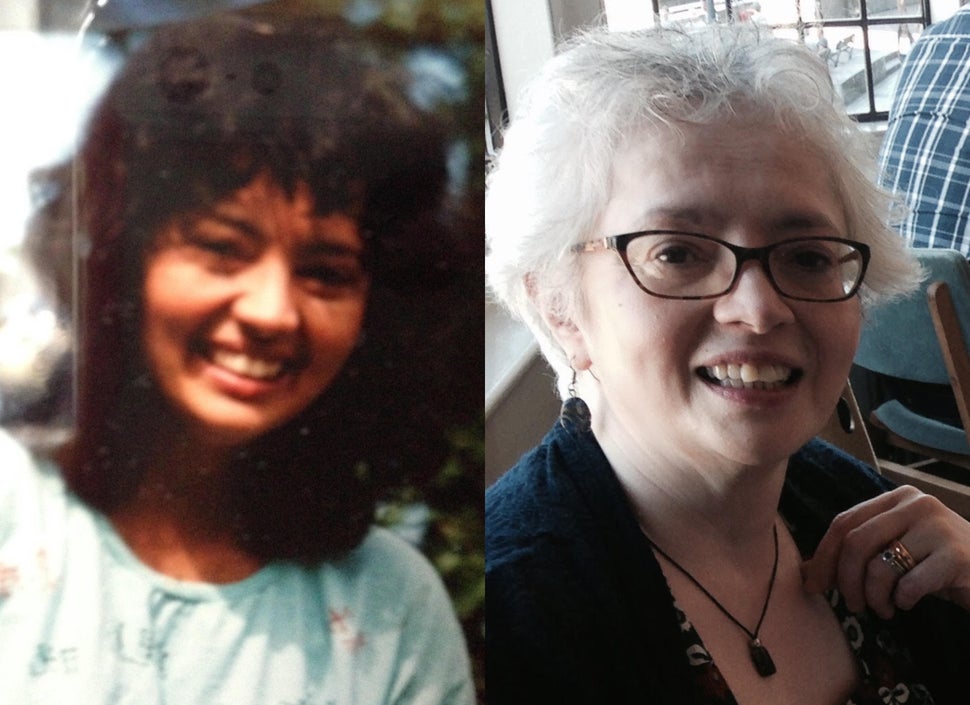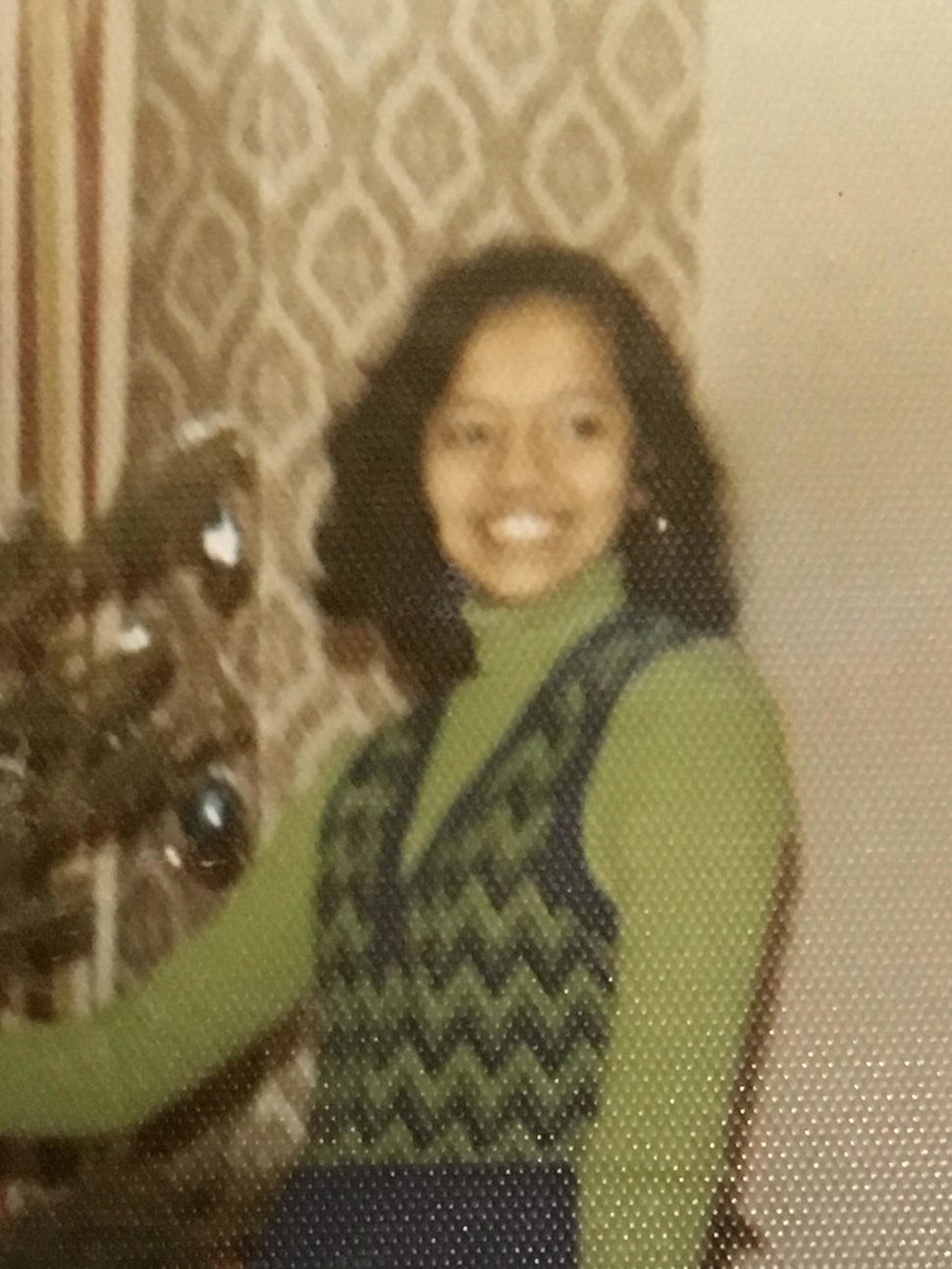

I grew up a brown-skinned girl in India, but for the past 18 years I’ve lived in the UK as a white woman.
When we arrived in the UK in the 70s, Enoch Powell had given his ‘Rivers of Blood’ speech a few years earlier, and so being Asian at that time meant you’d encounter some form of racism. I only realised I was brown when I came to the UK and children at my school called me ‘Paki’. At first I was confused and kept reminding them I was actually from India, not Pakistan.
I’m part of a three generational family who have vitiligo, a condition where a lack of melanin causes pale white patches develop on the skin. After I emigrating from India, I began to develop white patches around my eyes, throat and hands.
Turning from brown to white seemed normal in my family – my father had done just that. He had universal vitiligo, which meant he’d lost all his pigment and had turned white. He rarely discussed it, but we knew that life in India had been difficult for him, with people spitting as he walked by, doors slammed in his face and people refusing to touch anything he had. Vitiligo was seen as a form of leprosy. The one photo we have of him showed him to be a handsome, dark-skinned Indian man.
To make my life easier, my parents suggested I begin a ‘milk and fish’ diet, which was supposed to speed up the vitiligo. I recall having to eat a slightly cold piece of fish (no batter) and gulp down a glass of milk during the weekdays. The routine was so ingrained that it continued during my teenage years, through to my early 30s.
My parents were very supportive and after seeing I was struggling with my patches during my teenage years, introduced me to a ‘cover-up’ procedure. The method was ‘trial and error’ and tricky for a 14-year-old to master. It involved dissolving a tiny portion of potassium permanganate crystals in water, stored in a small bottle. When a little water was added to the crystals they changed colour. The skill was to get the closest colour to match my skin tone. Then, using a cotton bud, I’d colour in the patches around my eyes, body and hands and finally use a foundation to blend it.
This was time-consuming to perfect and occasionally painful: if the crystals hadn’t dissolved, they burned the skin. I couldn’t touch the finished product, so no rubbing my eyes, no scratching my nose and God forbid if I got caught in the rain, along with many stained collars, where the makeup came off. As much as it was a constant daily trial, it did allow me to lead a full life, socialising, travelling extensively around the world, working, getting married, starting a family from my late teens, to my early 30s. It allowed me to forget about the patches, once I’d covered them up.

The downside of the ‘cover-up’ was that it gave me an inferiority complex, a disbelief when someone complimented me on my looks. As a teenager I had a phrase stuck to my headboard: ‘From far away I look alright, but close-up, I look a fright’.
Around the birth of my second child, my vitiligo spread rapidly. I’d lost over 60% of my pigment, and I was finding it difficult to cover my patches. Things came to a head a few years later when we were in France, when the intense heat and large skin area I had to cover made it impossible and my friend, who we were visiting, said: ‘Just don’t put on any makeup’. It felt so liberating to be able to go out without it – I’d left the UK as an ethnic minority and returned looking like an English Rose.
Walking around those first days, weeks and months was surreal. I’d look in the mirror and see a perfect stranger. I wished my father had seen me turn white, and I’d thought to ask him how he’d coped with the loss not only of his pigment but of a part of his racial identity. My parents had explained I would go white, but now I had turned white my dad wasn’t there to tell me what to do next. I can only imagine it must have been harder for him turning white in India.
Previously it’d been commonplace to strike up a conversation with anyone of an ethnic minority background waiting at the bus stop. Now they just nodded and smiled politely. I wondered what would have happened if my normal attire had been a sari, instead of jeans and shirt, but I had shed all my appearances of being Indian.
After I stopped covering up, everything changed. The school run was particularly difficult – with my head down, I smiled at the curious stares of the teachers and parents, unwilling to discuss my transition, proudly deflecting a nosy teacher’s questions about what was different with these ‘new glasses’.
I suddenly found myself with a clean slate and I didn’t know what to do with myself – what colour clothes and makeup suited me now?
As a white woman I blended in, something I’d wanted to do for years. I didn’t have to smile everywhere I went, to put people at ease. I could be myself. The shops I went into were welcoming, helpful, nothing was too much to ask for. I now understand why some white people don’t see racism.
I became aware of the more subtle forms of racism. The shop assistant giving me eye contact and rolling her eyes, counting on my collusion, at the Asian lady in front of me who was querying something; the guy in the photo shop who assumed I’d be interested to hear his bigoted views on the Indian man parking his car outside.
When I’m shopping with my brown-skinned sister, I witness racism constantly. The difference is quite marked in the way we’re treated. A few years ago a woman accused my sister of stealing a scarf, in a roundabout way, where she was the only dark-skinned person in a large group of people choosing one. After locating the scarf, she didn’t offer my sister an apology and I challenged her, asking: “Would you have asked anyone else here that same question?” She just looked stunned and muttered about being short-staffed, while I asked her to think twice before making unfounded accusations.
I felt immense guilt when I discovered my daughter had vitiligo and for the first time I sought help. I joined the Vitiligo Society, which supported my husband and I. We decided that to enable our daughter to become a strong, confident, independent woman she shouldn’t take part in treatments or use camouflage.
Is it fear, ignorance, disgust, envy or something else that drives irrational hatred of another human being, because of the colour of their skin?
As an ethnic minority, I felt unable to express how hurtful people’s comments and behaviour were. I hope that, I, along with others who do not judge people by their skin, are braver in voicing their disgust at casual everyday racism, which erodes a person’s soul.
Life Less Ordinary is a weekly blog series from HuffPost UK that showcases weird, wonderful and transformational life experiences. If you’ve got a story to share, email ukblogteam@huffpost.com with LLO in the subject line. To read more from the series, visit our dedicated page.